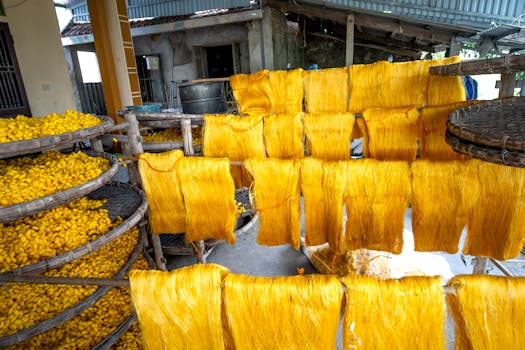
Fiber Futures: Innovations and Trends in Africa’s Textile Industry
Fiber Futures: Innovations and Trends in Africa’s Textile Industry. The African textile industry has a long and rich history, with evidence of textile production dating back to ancient times. Today, the industry is experiencing a resurgence, driven by innovations in fiber production, manufacturing, and sustainability. In this article, we will explore the latest trends and developments in Africa’s textile industry, with a focus on fiber futures.
Africa’s textile industry is diverse, with different countries specializing in different types of textiles. For example, Egypt is known for its high-quality cotton textiles, while South Africa is a major producer of wool and mohair textiles. The industry is also a significant employer, with millions of people working in textile production, manufacturing, and related services.
Section 1: Innovations in Fiber Production
One of the key drivers of the African textile industry’s resurgence is innovations in fiber production. New technologies and techniques are being developed to improve the quality and sustainability of fiber production. For example, researchers at the University of Cape Town have developed a new method for producing cotton fiber using a combination of traditional and modern techniques. This method reduces the environmental impact of cotton production while also improving the quality of the fiber.
In addition to cotton, other types of fibers are also being produced in Africa, including wool, mohair, and silk. The production of these fibers is often done using traditional techniques, but modern technologies are also being introduced to improve efficiency and quality. For example, the use of machine learning algorithms can help to improve the sorting and grading of fibers, resulting in higher-quality textiles.
Section 2: Trends in Textile Manufacturing
The African textile industry is also experiencing a number of trends in textile manufacturing. One of the most significant trends is the move towards sustainability and environmental responsibility. Many textile manufacturers are adopting sustainable practices, such as using renewable energy, reducing waste, and implementing recycling programs. For example, the South African textile manufacturer, Seardel, has implemented a number of sustainable practices, including the use of solar power and a recycling program for textile waste.
Another trend in textile manufacturing is the use of digital technologies, such as 3D printing and computer-aided design. These technologies allow for the creation of complex and customized textile designs, which can be produced quickly and efficiently. For example, the Kenyan textile manufacturer, KikoRomeo, uses 3D printing to produce customized textile designs for fashion and interior design applications.
Section 3: The Future of Africa’s Textile Industry
Looking to the future, Africa’s textile industry is expected to continue to grow and evolve. The industry is likely to be driven by a number of factors, including innovations in fiber production, trends in textile manufacturing, and increasing demand for sustainable and environmentally responsible textiles. In addition, the African Continental Free Trade Area (AfCFTA) is likely to have a significant impact on the industry, by providing new opportunities for trade and investment.
However, the industry is also likely to face a number of challenges, including competition from other regions, such as Asia, and the need to adapt to changing consumer preferences and technologies. To address these challenges, the industry will need to continue to innovate and invest in new technologies and techniques. This will require significant investment in research and development, as well as the development of new skills and training programs for workers in the industry.
Section 4: Conclusion
In conclusion, Africa’s textile industry is experiencing a resurgence, driven by innovations in fiber production, trends in textile manufacturing, and increasing demand for sustainable and environmentally responsible textiles. The industry has a long and rich history, and it is likely to continue to play an important role in the African economy. However, the industry will need to continue to innovate and invest in new technologies and techniques to remain competitive and address the challenges it faces.
The future of Africa’s textile industry is exciting and full of possibilities. With the right investments and innovations, the industry can continue to grow and evolve, providing new opportunities for workers, businesses, and consumers. As the industry looks to the future, it is clear that fiber futures will play a critical role in shaping the industry and its place in the global textile market.






